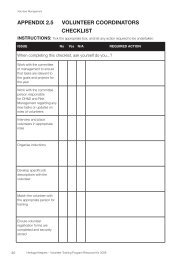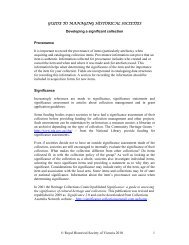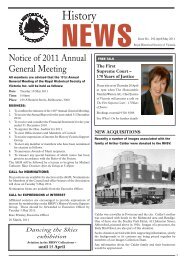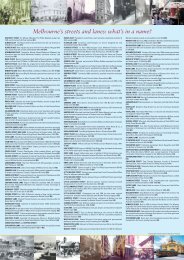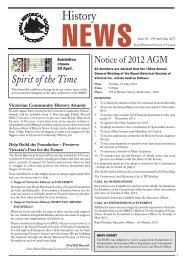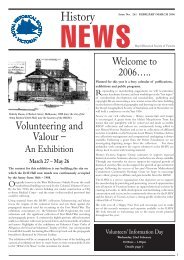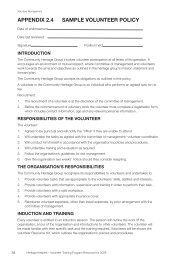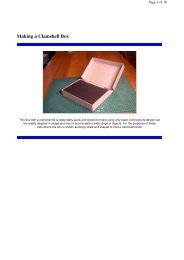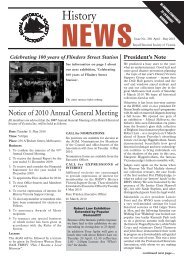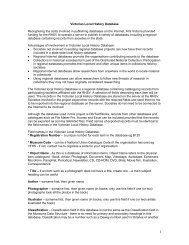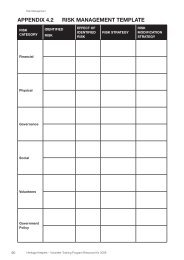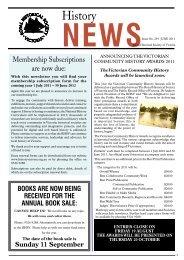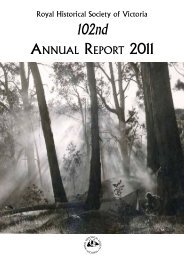Style guides for local history publishing - Royal Historical Society of ...
Style guides for local history publishing - Royal Historical Society of ...
Style guides for local history publishing - Royal Historical Society of ...
You also want an ePaper? Increase the reach of your titles
YUMPU automatically turns print PDFs into web optimized ePapers that Google loves.
Researching and collecting the in<strong>for</strong>mation and presenting the facts in an interestingmanner is the first step in producing a book or an article, but that is only part <strong>of</strong> theproject. The style in which the in<strong>for</strong>mation is presented is also important. As well asassisting with the layout <strong>of</strong> documents style <strong>guides</strong> provide in<strong>for</strong>mation about usingother important elements <strong>of</strong> the publication such as citations and bibliographies and,in some cases, indexes.<strong>Style</strong> <strong>guides</strong>The editors <strong>of</strong> most <strong>publishing</strong> houses and journals stipulate the style guidelines to befollowed. For example the editors <strong>of</strong> the Victorian <strong>Historical</strong> Journal provide thefollowing in<strong>for</strong>mation concerning guidelines <strong>for</strong> their publication.Where not otherwise indicated, the Journal follows the style set down in the <strong>Style</strong>Manual <strong>for</strong> Authors, Editors and Printers, 6th ed., Milton, John Wiley & Sons, 2002.Spelling and hyphenation should follow the Macquarie Concise Dictionary, 6th ed.,Sydney, Macquarie Library, 2009. iiiIf a style guide is not stipulated <strong>for</strong> your publication then select one <strong>of</strong> therecommended styles <strong>for</strong> writing and always be consistent when citing sources andpreparing reference notes or bibliographies. <strong>Style</strong> <strong>guides</strong> used by Australian writersinclude –• Commonwealth <strong>of</strong> Australia. <strong>Style</strong> manual <strong>for</strong> authors, editors and printersrevised by Snooks & Co. 6 th ed., Milton, John Wiley & Sons, 2002.• Turabian, Kate L. A manual <strong>for</strong> writers <strong>of</strong> term papers, theses and dissertations.7 th ed. Chicago, University <strong>of</strong> Chicago Press, 2007Both <strong>of</strong> these publications have been updated to include working with electronicpublications.CitationsReaders <strong>of</strong> non-fiction frequently check the footnotes or endnotes and the referencelist or bibliography <strong>for</strong> other material that may be useful <strong>for</strong> further research on thetopic. Quotes provided in books and articles are <strong>of</strong>ten partial quotes and the readermay wish to read the full item from which the quotation was taken. The author mayalso allude to further in<strong>for</strong>mation on a topic available in a newspaper article or othersource and the citation can direct the reader to that source.To cite is to ‘quote (a passage, book or author) in support <strong>of</strong> an argument etc’. ivCitations are used when quotations from other works are included in the writing andwhen reference is made to the ideas <strong>of</strong> another person.Using citations shows that the writer acknowledges the use <strong>of</strong> material <strong>of</strong> others andhas based the work on research. Citations can show how an idea became accepted.Using citations can also be useful when building an argument to demonstrate analternative viewpoint.However do not over use citations, especially in a work <strong>for</strong> a general audience.© <strong>Royal</strong> <strong>Historical</strong> <strong>Society</strong> <strong>of</strong> Victoria 2010 2



